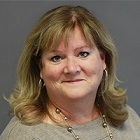For financial institutions adopting the current expected credit loss, or CECL, accounting standard in 2023, the next 26 months will pass quickly.
 As these banks and credit unions work to identify and gather relevant loan-level data and select a methodology for calculating the allowance for credit losses, or ACL, they must also deal with coronavirus-related operational challenges. These include increased loan modifications and credit losses, a surge in fraud attempts, and myriad staffing issues related to the pandemic.
As these banks and credit unions work to identify and gather relevant loan-level data and select a methodology for calculating the allowance for credit losses, or ACL, they must also deal with coronavirus-related operational challenges. These include increased loan modifications and credit losses, a surge in fraud attempts, and myriad staffing issues related to the pandemic.
With so much on their plates, executives in charge of the CECL transition can ensure a smooth transition by charting the course carefully. [Abrigo is hosting a free online CECL symposium on Nov. 5 to help 2023 adopters prepare for closing out this year and moving into 2021.]
 Understanding some of the myths and misconceptions about implementing CECL will help these financial institutions avoid some of the hazards to navigating the change, said Garver Moore, Managing Director of Abrigo Advisory Services, during Abrigo’s recent “ThinkBIG: Manage Risk. Drive Growth” conference. Moore described five “myths, monsters, and misconceptions” that Abrigo’s advisors have come across in their CECL implementation work with hundreds of financial institutions.
Understanding some of the myths and misconceptions about implementing CECL will help these financial institutions avoid some of the hazards to navigating the change, said Garver Moore, Managing Director of Abrigo Advisory Services, during Abrigo’s recent “ThinkBIG: Manage Risk. Drive Growth” conference. Moore described five “myths, monsters, and misconceptions” that Abrigo’s advisors have come across in their CECL implementation work with hundreds of financial institutions.
1. Myth: Depth and breadth of data are required. The first myth is that financial institutions will be unable to implement CECL without decades of data or extremely detailed historical data. “Not to be too glib, but to paraphrase [former Defense Secretary Donald] Rumsfeld, you go to CECL with the data you have, not the data you want,” Moore said. “Now, if you’ve done nothing the last several years to record and collect information, that’s not a good look. It’s 2020, and storage is cheap.” But very few of the more than 200 financial institutions Abrigo has helped implement CECL had first-party institutional data from 2008-2009, or 2010-2011, Moore said.
He noted that the CECL accounting standard doesn’t require a certain minimum amount of data for implementation. “More data also doesn’t mean that you know more. One of the first things we’ll ask a client is, ‘If you had loan-level data for the last seven years, would it tell you anything different?’ And for a lot of clients, the answer is no.”
“You can supplement what you do and don’t know with information from other institutions, top-down information from Call Reports, or other data aggregators, including [Abrigo],” Moore said. Internal and external data are appropriate.
Moore said financial institutions do need to have correct data, and they do need to have controls around the data they use. “But as far as needing X amount of a certain kind of field from a certain place, that is always something you can work around,” he said. “The only thing you can’t do is have wrong data and believe that it’s correct.”
2. Myth: There is a right answer. Moore said another myth is that your financial institution is in the process of developing a single right answer. “There’s subjectivity throughout many layers of this,” he said. Even within a single CECL methodology, such as discounted cash flow, there are a lot of decisions to be made and a lot of subjectivity. “Our goal is to be less wrong, but there is no such thing as a provably correct CECL model, even if we didn’t have to make a forecast.” A consistent and well-reasoned process can be constructed and followed, and that is what is most important as financial institutions make the transition to CECL, Moore said.
3. Myth: Accurate forecasting is required. While it’s true that financial institutions must apply a forecast, no clients have been criticized on their forecast inputs, Moore said. Yet many financial institutions starting the CECL implementation process think a lot of their attention must be on the forecast component and on their ability to substantiate that forecast. “The reality here is we need to apply that forecast consistently, but we don’t necessarily need to be correct about the future, because if we could do that reliably, then making bank or credit union loans is probably the silliest thing we could do with our time,” Moore said.
“If you think it would be valuable to your institution to have someone provide you with an economic outlook, then by all means do that partnership,” he said. “We have plenty of institutions that use Fed outlooks, although hilariously, in Q1 there just wasn’t one.”
4. Myth: All methodologies must be examined. Moore said another myth that is simply not true or practical is that financial institutions must work through each CECL methodology and then pick which is the best for that institution. This is especially not practical considering there are no “bright lines” between methodologies. “There are more methodology families,” he said. “The standard gives you a lot of flexibility on what you can do, and there’s an interpretation then that you must do all of it and then decide. That is a way to implement this, but that is a way that is very cheap to recommend as a consultant and incredibly expensive to follow as an institution implementing the standard.”Some methodologies will clearly be inappropriate based on the institution’s loan portfolio and, therefore, can be ruled out immediately, he said. “You can exclude a lot just reasoning through it,” Moore said. “You don’t necessarily have to gather the data and prove by implementing seven different methods in CECL which one is the one you’re going to do.”
5. Myth: CECL is higher. Moore said that CECL practices are often more precise than the incurred loss method, and as a result, the allowance for credit losses actually may be lower than an allowance calculated under the existing standard for some institutions. He noted that at the end of 2019, Abrigo advisors would run CECL models using economic inputs and often struggle to get close to where institutions were reserved based on the incurred-loss method. “There are a lot of different moving parts here,” he said, noting that forecast expectations may exert pressure contrary to the upward pressure of the “life of loan” measurement. “In a benign environment, that can wash out.”
“One of the reasons I think folks starting this out are really worried about the implications of this accounting standard change is this short cut idea that a three-year asset is three times the loss rate of a one-year asset, or a seven-year asset like a residential mortgage that you’re holding now on the balance sheet, that’s seven times a one-year loss rate,” he said. “It’s not only not true, it’s not true to the degree that that’s not an acceptable way to do this.”
Once financial institutions can look past the common myths of CECL, it’s easier to focus on planning for how to make the transition and for addressing any true hazards, such as the coronavirus, that arise.
Moore said financial institutions planning the CECL transition during this period will be able to learn a lot from SEC registrants that have already adopted the CECL accounting standard. He recommended following the quarterly and annual SEC filings, especially the Management’s Discussion & Analysis of Financial Position and Results of Operations (MD&A) section, to see how filers discuss CECL and identified risk factors. He also noted that backtesting and monitoring will be critical for 2023 adopters.
About the Author

Mary Ellen Biery is a Senior Writer and Content Specialist at Abrigo.